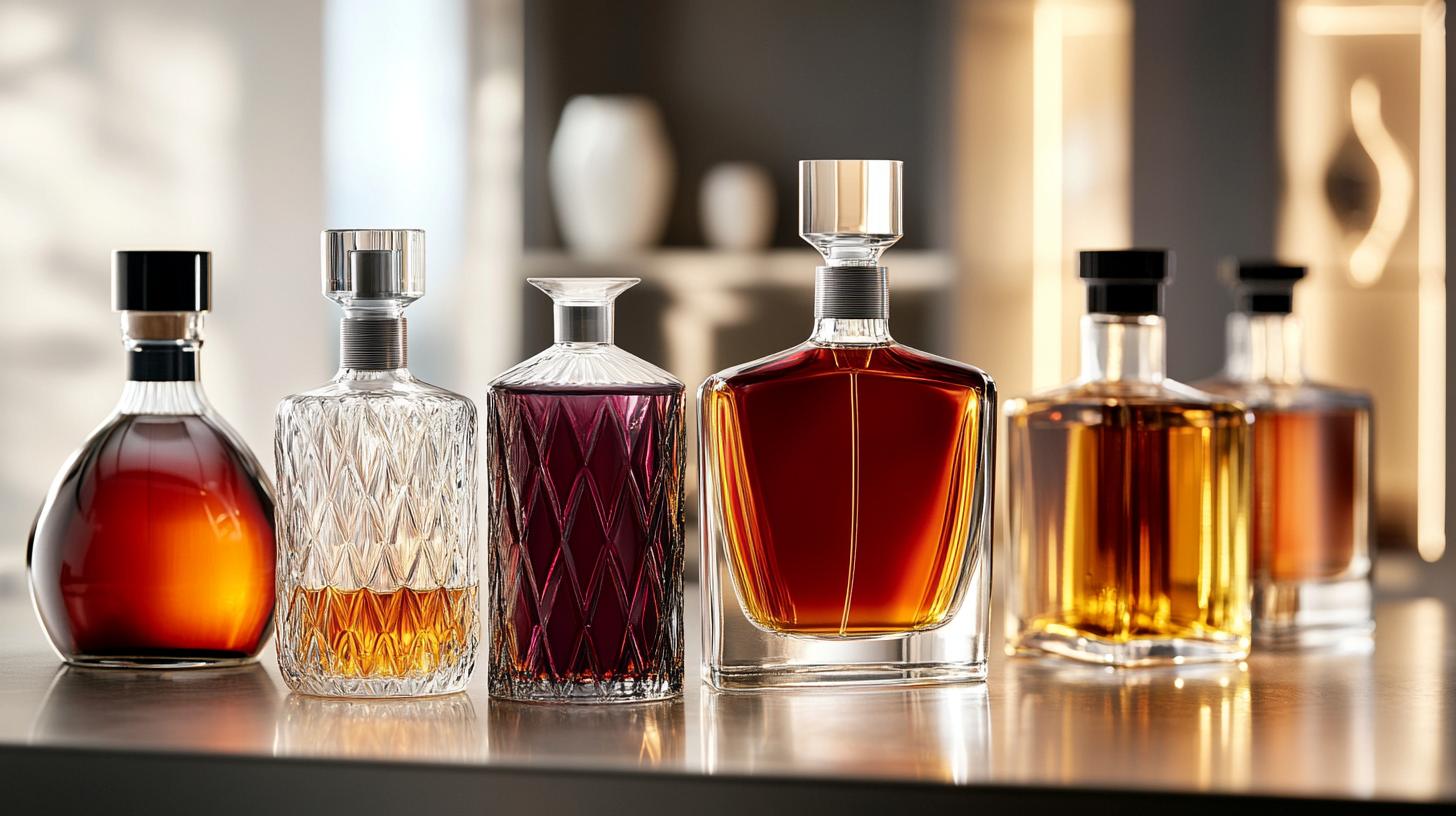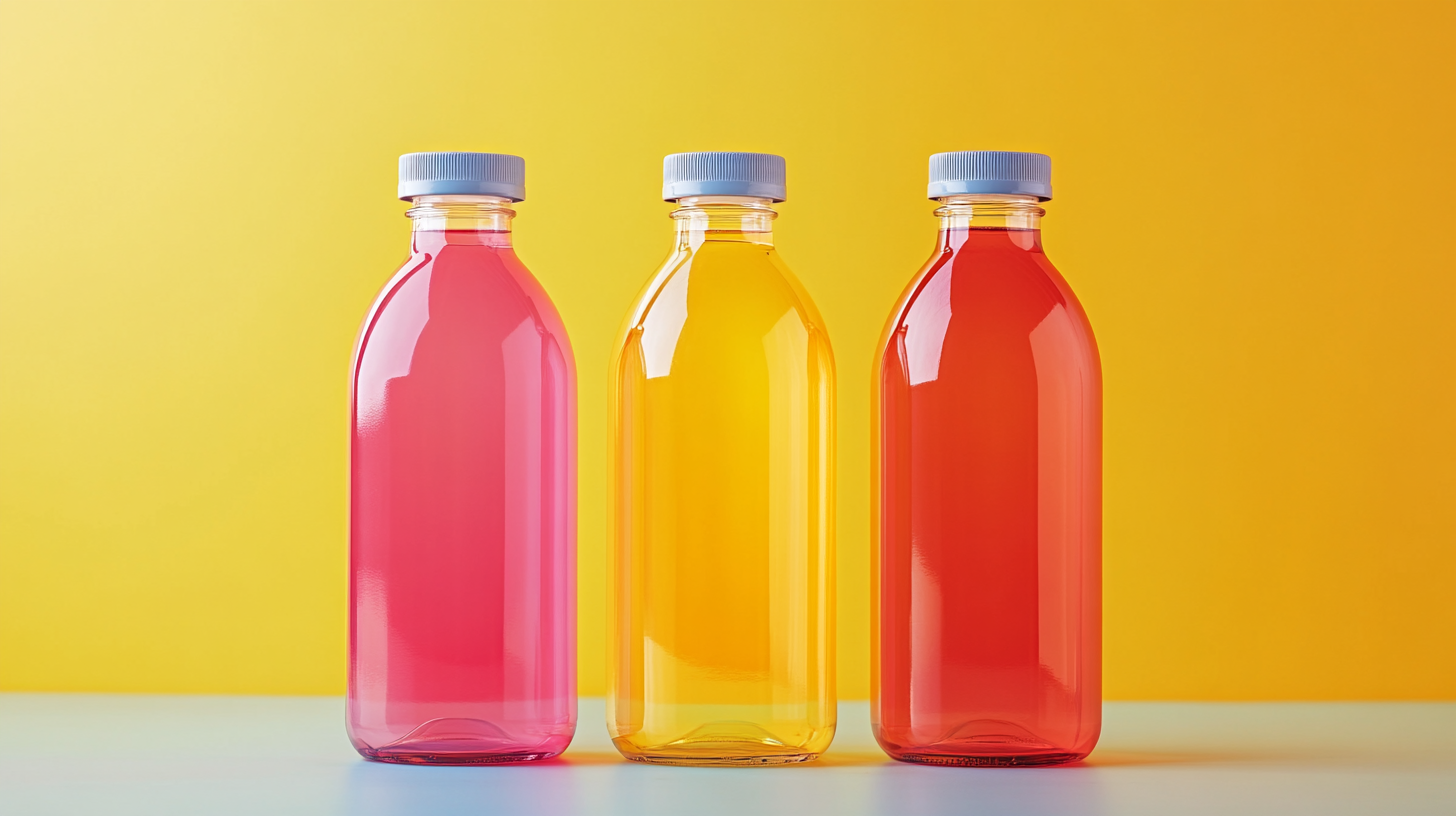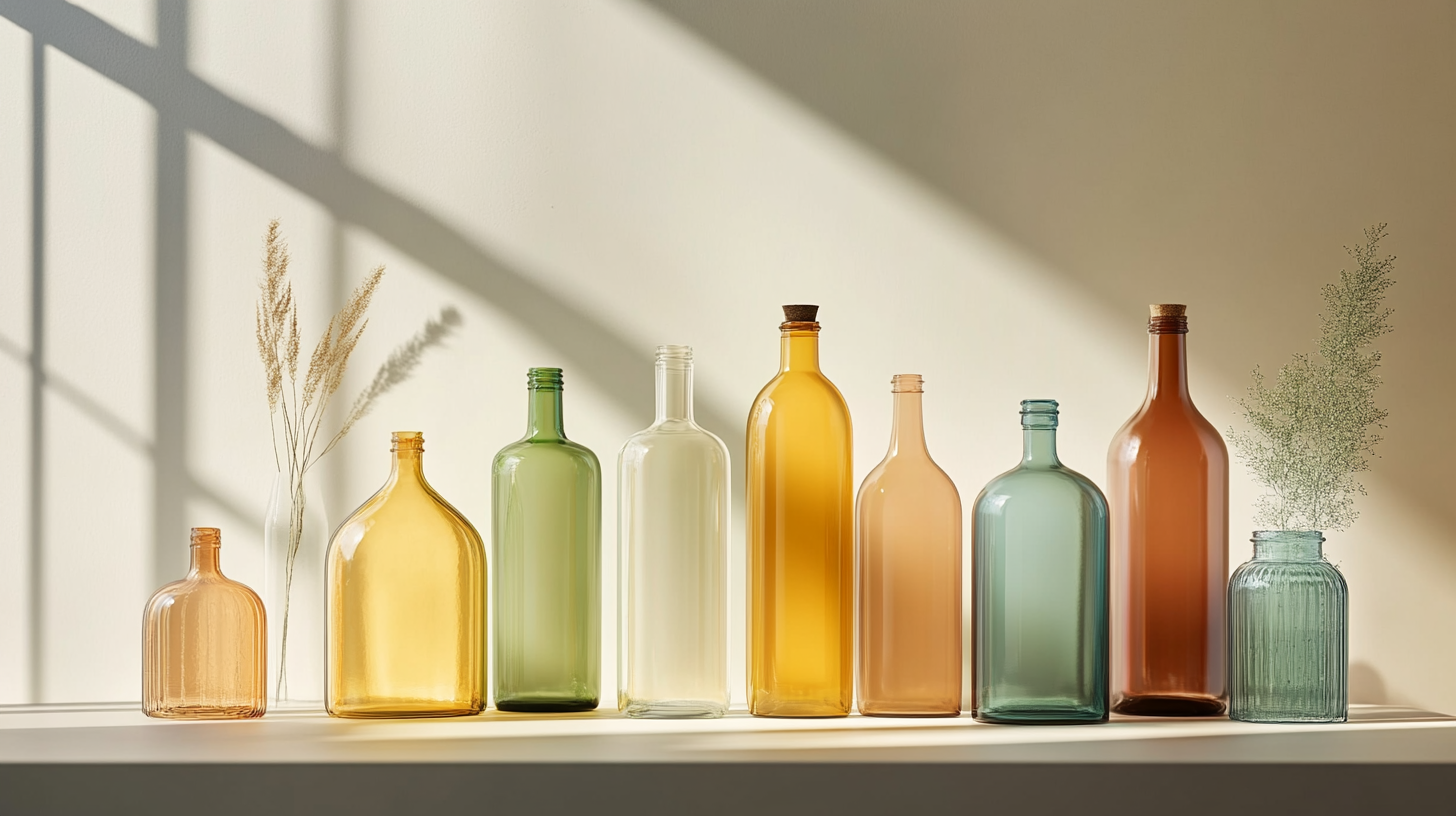Trends in Glass Bottles for Global Buyers: Insights and Predictions for 2025
As we look ahead to 2025, the global market for glass bottles is undergoing a significant transformation driven by evolving consumer preferences, sustainability concerns, and technological advancements. Glass bottles have long been favored for their aesthetic appeal and recyclability, but the trends reshaping this industry are pushing innovation to the forefront. From eco-friendly manufacturing processes to enhanced design features, the upcoming years promise to redefine how companies and consumers perceive and utilize glass bottles.
In this blog, we will explore the latest insights and predictions concerning the glass bottle market, highlighting emerging trends and developments that global buyers should be aware of. As sustainability becomes a core value for consumers, the demand for glass bottles that combine functionality and environmental responsibility is set to rise. Join us as we delve into the factors influencing these trends and how they will shape the future landscape of glass packaging by 2025.

Current Market Dynamics: Glass Bottle Demand Growth Trends and Projections for 2025
The glass bottle market is experiencing notable shifts, driven by evolving consumer preferences and growing environmental concerns. As we approach 2025, there is a clear upward trajectory in the demand for glass bottles, particularly in sectors such as eco-friendly products and packaged beverages. Recent insights suggest that the eco-friendly water bottle segment is poised for substantial revenue growth, reflecting a broader trend towards sustainable packaging solutions. This shift indicates that global buyers are increasingly favoring glass over plastic due to its recyclability and lower environmental impact.
In addition to sustainability, the glass drinkware market is also on the rise, with a forecasted compound annual growth rate (CAGR) of 10.6%. This growth is propelled by a demand for premium products and stylish designs, which enhance consumer experiences. With innovations in design and functionality, manufacturers are compelled to remain agile, constantly updating their product lines to meet the evolving tastes of consumers. This trend not only underscores the resilience of the glass industry but also showcases its adaptability in a competitive market landscape.
As we look towards 2025, the global glass manufacturing market is expected to continue its expansion, with forecasts suggesting growth from $237.1 billion. The Boston Round glass bottle is gaining traction, signaling a need for brands to focus on versatile and trending bottle designs. With the convergence of eco-consciousness and aesthetic appeal, the glass bottle market is set to thrive, catering to a diverse range of consumer demands worldwide.

Sustainability Influence: The Shift Toward Eco-Friendly Glass Bottles in Consumer Preferences
As we move towards 2025, sustainability is emerging as a key influence in consumer preferences, particularly in the realm of packaging. The shift towards eco-friendly glass bottles is not just a fleeting trend but a reflection of a broader societal commitment to reducing environmental impact. Today’s consumers are increasingly aware of the ecological implications of their choices, leading brands to reevaluate their packaging strategies. Glass bottles, known for their recyclability and minimal environmental footprint, have become a preferred option for many.
This growing demand for sustainable packaging solutions is driving innovation within the glass bottle industry. Brands are not only focusing on the reduction of plastic usage but are also exploring new designs and technologies that enhance the sustainability of glass production. For instance, advances in lightweight glass technology are reducing energy consumption during transportation and manufacturing, while still maintaining durability and aesthetic appeal. Additionally, many companies are adopting refillable and reusable glass options, further promoting the concept of a circular economy.
Consumer sentiment is shifting towards brands that demonstrate environmental responsibility. Companies that embrace eco-friendly practices in their packaging are likely to gain loyalty and trust from their customers, who prioritize sustainable choices in their purchasing decisions. As we approach 2025, the trend towards eco-friendly glass bottles will likely continue to grow, as both manufacturers and consumers recognize the importance of sustainability in shaping our planet's future.
Trends in Glass Bottles for Global Buyers: Eco-Friendly Preferences in 2025
Innovative Designs: How Aesthetic and Functional Trends Shape Glass Bottle Production
In the rapidly evolving landscape of packaging, glass bottles continue to capture the attention of global buyers, driven by both aesthetic appeal and functional advantages. Innovative designs are shaping the future of glass bottle production as manufacturers strive to meet consumer demands for originality and sustainability. According to the Global Glass Bottle Market Report, the industry is projected to grow at a CAGR of 5.1% from 2023 to 2028, reflecting a robust shift towards eco-friendly packaging solutions.
One of the most significant trends is the rise of customized bottle designs, which cater to niche markets and enhance brand identity. The 2023 Packaging Trends report reveals that 63% of consumers are more likely to purchase products with unique bottle shapes and artistic elements. Brands are leveraging this insight by investing in eye-catching designs that not only stand out on shelves but also create a memorable customer experience. Additionally, functional design aspects, such as user-friendly closures and portability, are becoming increasingly important, with 47% of consumers prioritizing convenience.
Sustainability remains at the forefront of glass packaging innovations. A report by Smithers Pira indicates that recycled glass usage is expected to increase by 20% over the next five years, as brands aim to reduce their carbon footprint and appeal to environmentally conscious consumers. The introduction of lightweight glass technology is also gaining traction, allowing for reduced energy costs during production and transport, thereby aligning with the global shift towards more sustainable manufacturing practices. These developments underscore the critical interplay between aesthetic design and functionality, positioning glass bottles as a preferred choice for a diverse range of products across multiple industries.
Trends in Glass Bottles for Global Buyers: Insights and Predictions for 2025
| Trend | Description | Impact on Production | Expected Innovations |
|---|---|---|---|
| Sustainability | Increasing demand for eco-friendly packaging options. | Shift towards using recycled glass and reducing carbon footprint. | Development of biodegradable labeling and eco-friendly inks. |
| Customization | Growing trend towards personalized bottle designs for brands. | Increased flexibility in production lines to accommodate unique designs. | Use of advanced printing technologies for detailed customization. |
| Multi-functionality | Bottles designed for multiple uses, such as drinkware and storage. | Longer production cycles to validate functionality. | Innovations in design that combine aesthetics with practicality. |
| Smart Packaging | Integration of technology to provide information and tracking. | Adoption of IoT technologies in bottle manufacturing. | Voice-activated systems and QR codes for consumer interaction. |
| Aesthetic Trends | Focus on unique shapes, colors, and surface textures. | Increased investment in design-centric production techniques. | Collaboration with artists for limited-edition series. |
Technology Integration: The Role of Automation in Glass Bottle Manufacturing by 2025
As we approach 2025, the integration of advanced technologies in glass bottle manufacturing is revolutionizing the industry. Automation stands at the forefront, enhanced by a suite of innovations often referred to as Packaging 4.0. Technologies such as artificial intelligence (AI), the Internet of Things (IoT), blockchain, and robotics are driving significant improvements in efficiency and sustainability within glass packaging.
AI plays a crucial role in optimizing production processes, enabling manufacturers to analyze data in real-time, foresee maintenance needs, and minimize waste. The IoT further enhances this by facilitating communication between machines, allowing for better monitoring of the manufacturing environment. This connectivity not only streamlines operations but also supports sustainability initiatives by reducing energy consumption and raw material usage.
Blockchain technology contributes to greater transparency in the supply chain, allowing for the tracking of materials from source to shelf. This is particularly important for environmentally-conscious consumers as it assures them of the ethical and sustainable practices employed in producing their products. Coupling these technologies with robotics automation leads to significant labor cost reductions and minimizes human error, paving the way for more agile and responsive production lines. Overall, the forecast for glass bottle manufacturing in 2025 is one of significant transformation, driven by these technological advancements.

Regional Insights: Glass Bottle Market Trends and Consumer Behavior Across Key Global Regions
In recent years, the glass bottle market has undergone a notable transformation driven by evolving consumer behaviors and sustainability trends across key global regions. With an increasing emphasis on environmentally friendly packaging, consumers are gravitating toward glass bottles as a premium choice that not only preserves the integrity of beverages and other products but also aligns with their eco-conscious values.
Regionally, the demand for glass bottles has surged, particularly in areas with robust health and wellness trends. For instance, the Asia-Pacific region is witnessing significant growth in the nutrition supplements packaging segment. As consumers seek high-quality, safe, and hygienic packaging for health-related products, glass bottles stand out as a preferred option. This trend is complemented by a rise in the popularity of reusable water bottles, with consumers opting for glass as a sustainable alternative to plastic.
Moreover, the European market is experiencing a shift towards innovative glass packaging solutions that enhance functionality and aesthetic appeal. Brands are increasingly exploring creative designs that attract consumers while maintaining the recyclable nature of glass. This focus on innovation is expected to accelerate growth within the glass bottle sector, particularly as luxury and premium products continue to command a strong presence in consumer markets. As we approach 2025, these regional insights highlight the critical role of consumer behavior in shaping the future landscape of the glass bottle industry.
